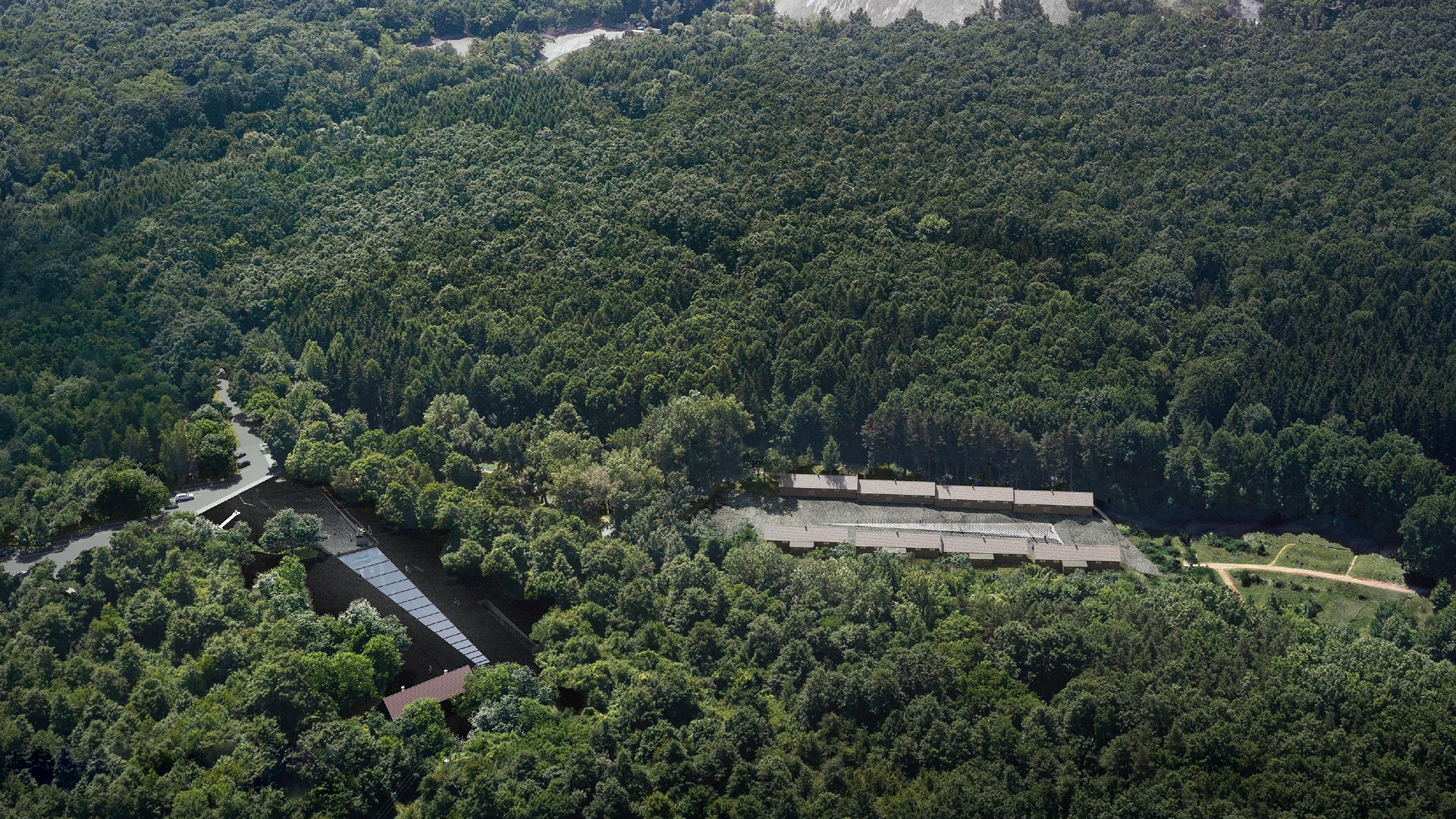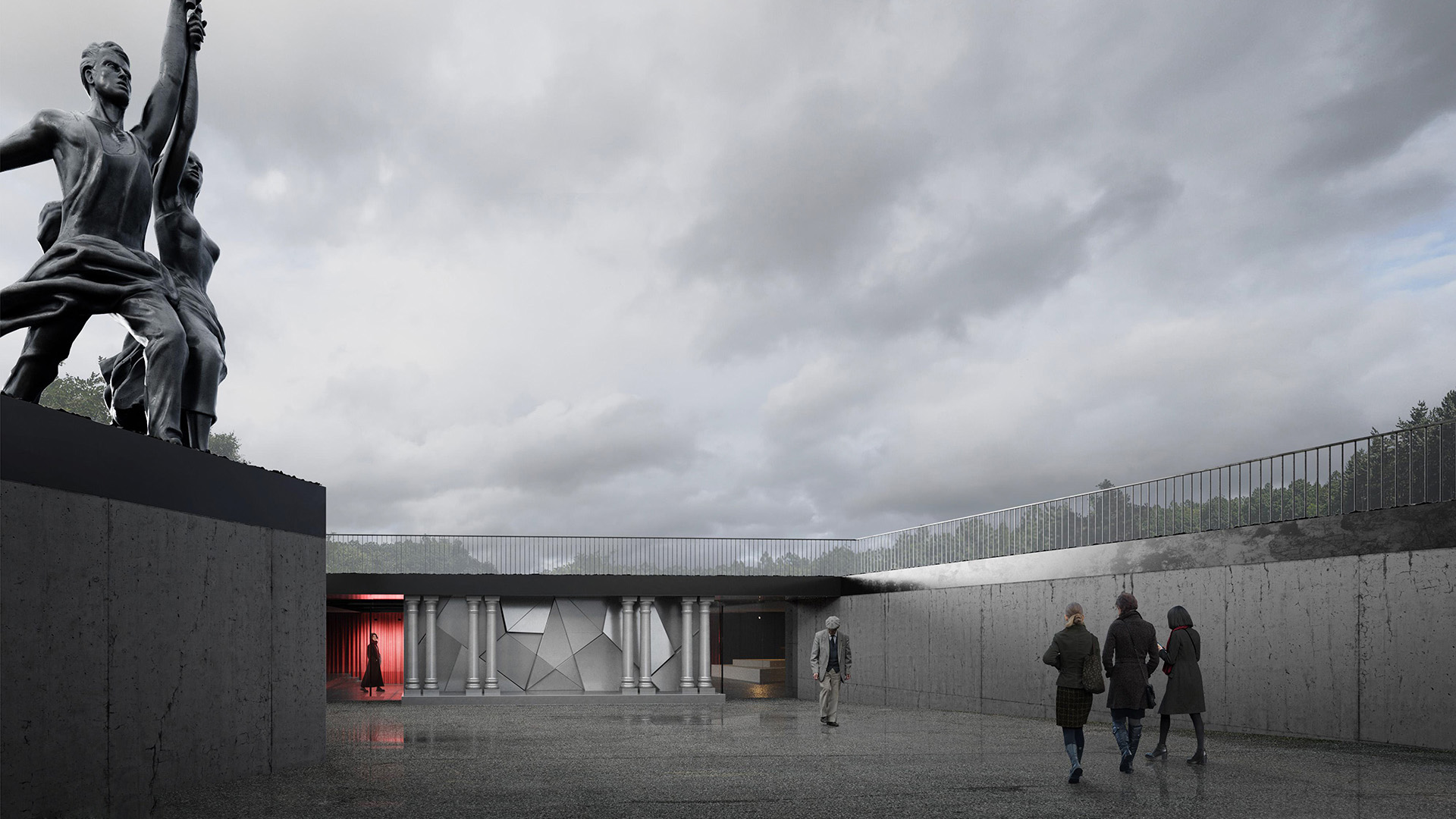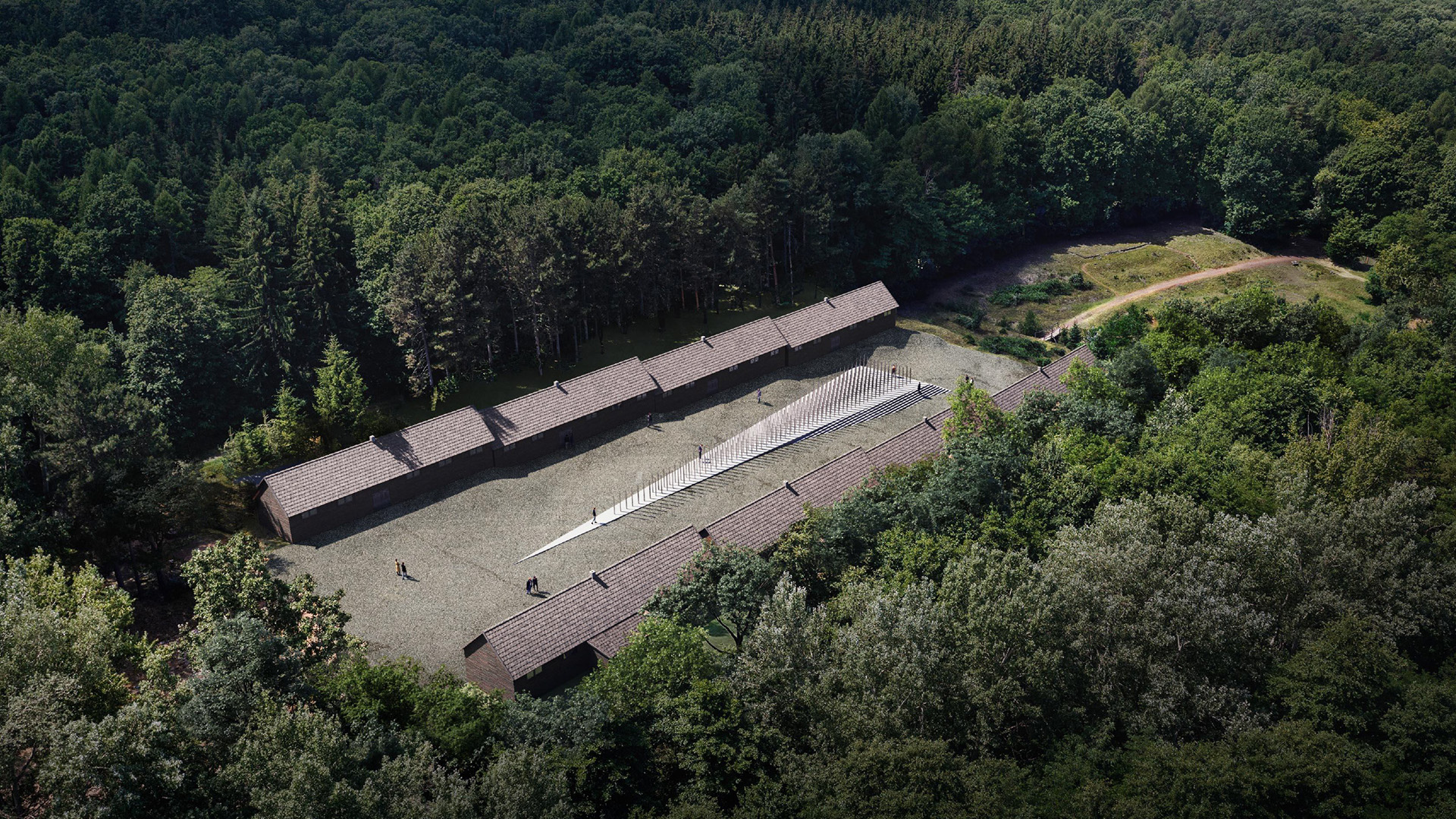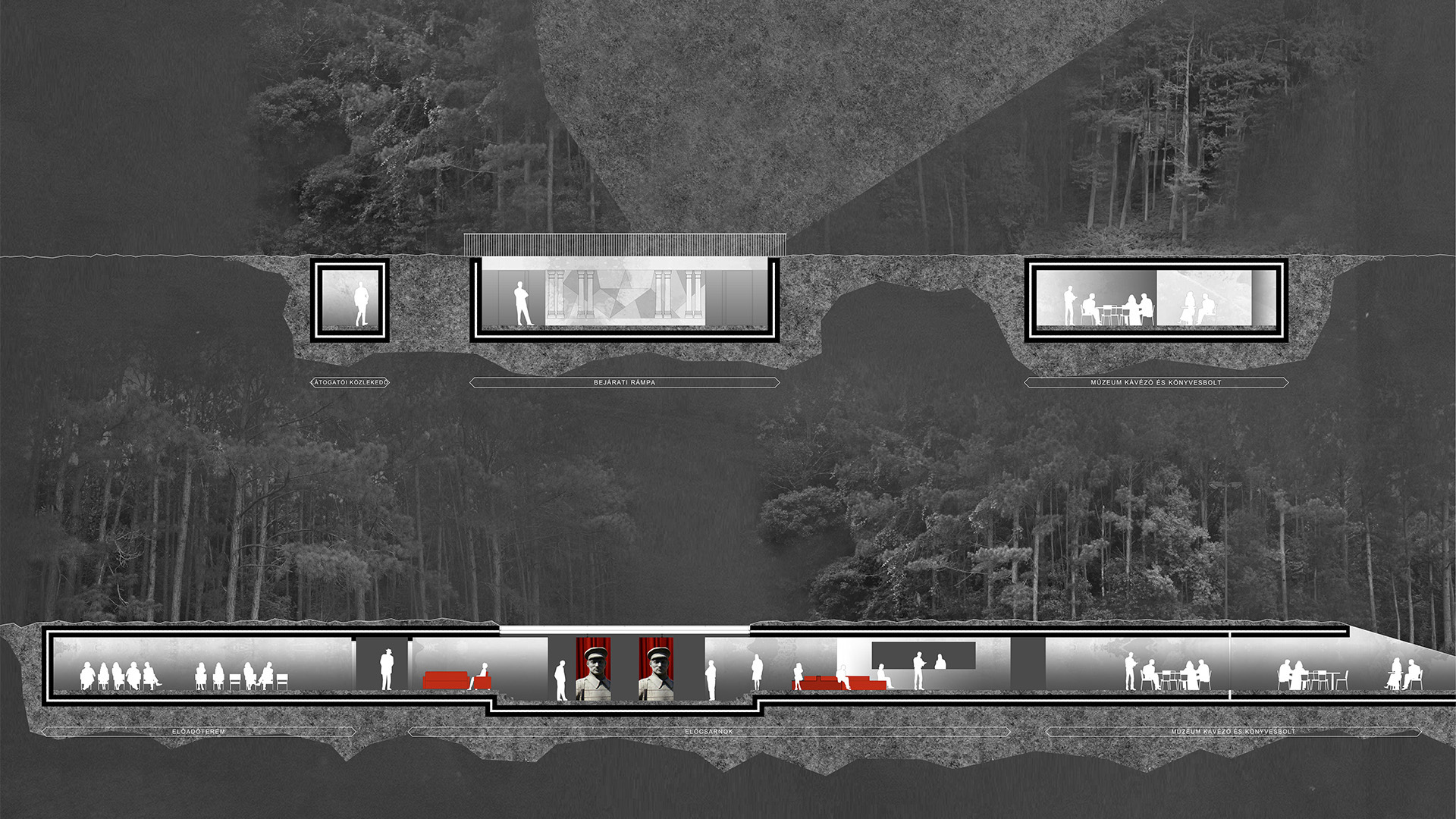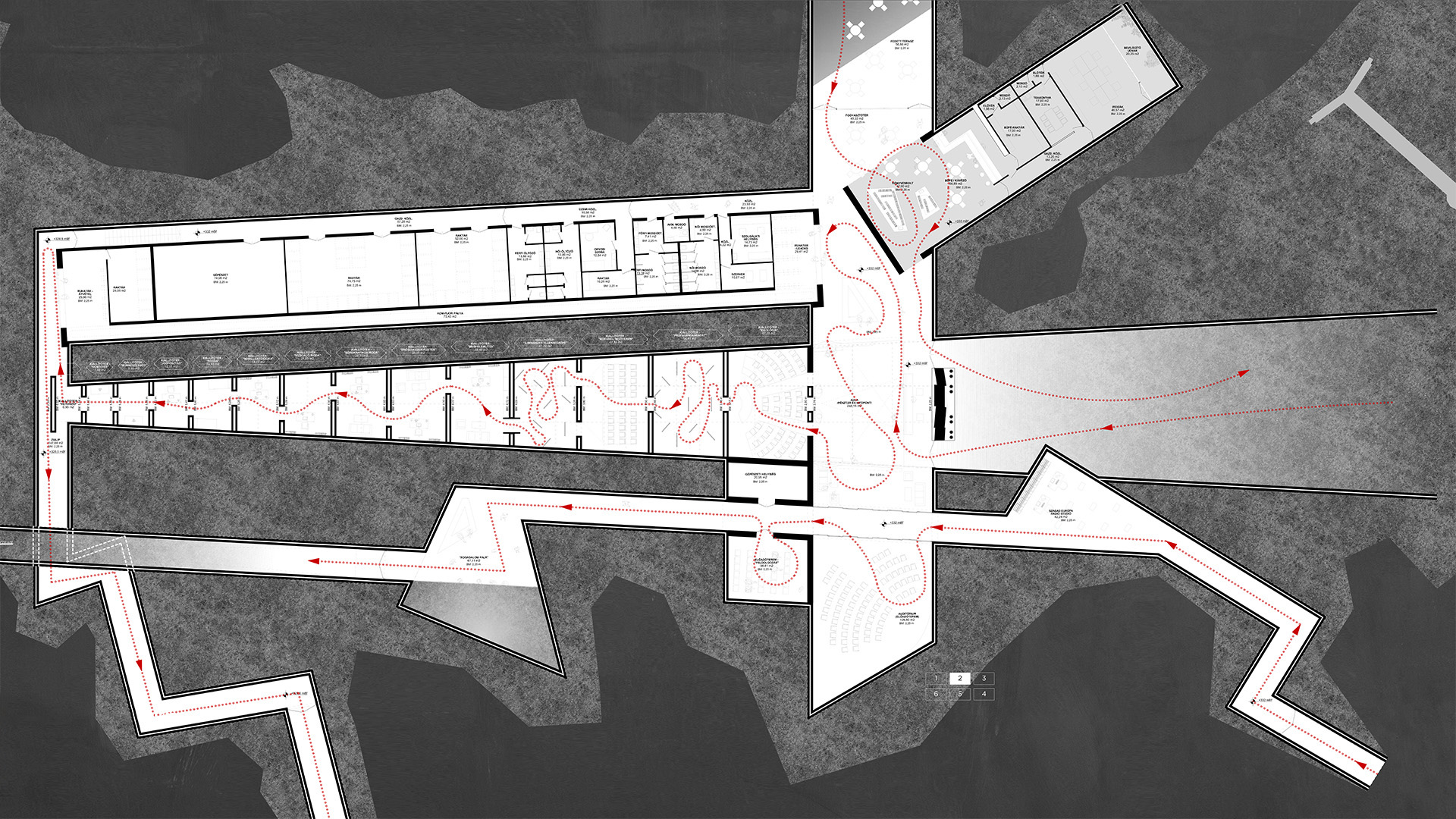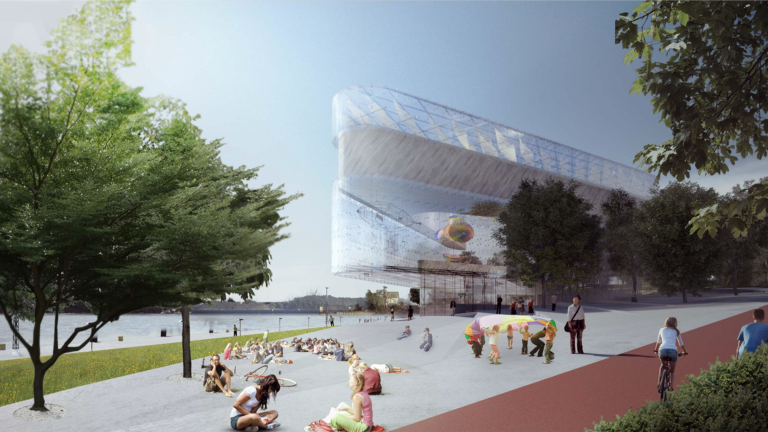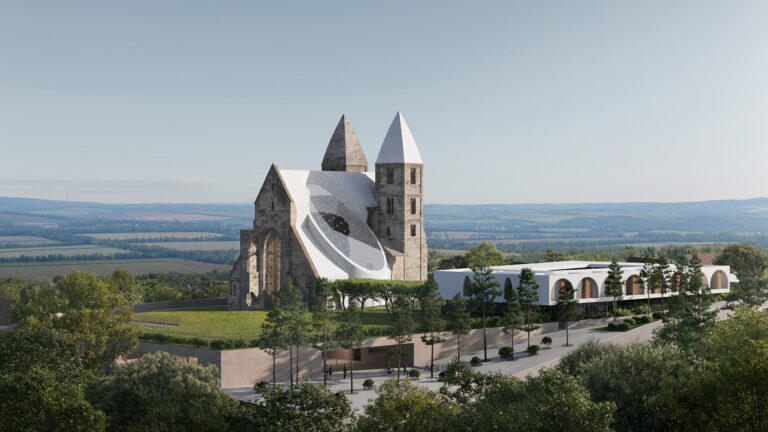Recsk, Hungary

Recsk National Memorial Park
Recsk, Hungary
The origin of remembrance develops through the interplay of our senses and emotions, making it more of a psychological than a historical phenomenon. In our studio’s design proposal for the Recsk National Memorial Park competition, we explored how architecture can provide space for remembrance.
Between 1950 and 1953, the Hungarian State Protection Authority operated a forced labour camp near the small town of Recsk. Established without any legal justification, the camp extended Stalin’s gulag model into Hungary at the time. Around 1,500 political prisoners were confined in barracks behind barbed wire, forced to perform gruelling labour for 12 to 14 hours a day in a nearby mine – based entirely on fabricated charges.
Following Stalin’s death in 1953, Prime Minister Imre Nagy ordered the closure of the labour camp, and the facility was dismantled. The surviving prisoners were released, but during the communist era, speaking about the camp was strictly forbidden. It was only after the regime change in the 1990s that the location of the camp was rediscovered, and some of its buildings were reconstructed based on the accounts of former prisoners. The architectural design competition announced in 2021 aimed to create a true memorial site with a visitor centre and an interactive exhibition, commemorating the brutality of the gulag system, which remains shocking and sobering even today.
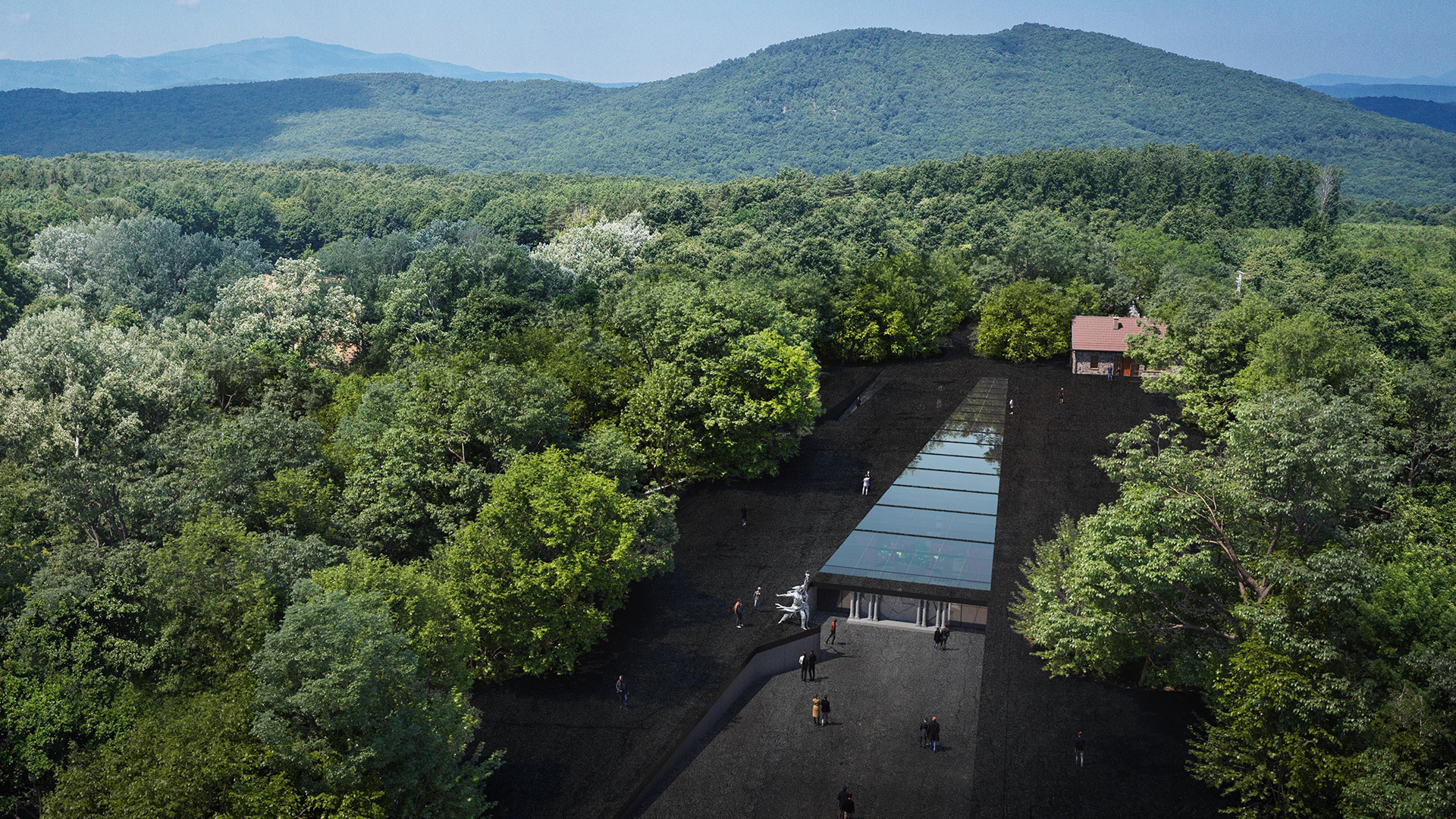
Recsk National Memorial Park – Visual Design: The Greypixel
Aerial and satellite imagery clearly show that the current Recsk National Memorial Park appears as a clearing within the surrounding dense forest. The once-secret labour camp, concealed by the communist dictatorship, is now slowly being erased by time and nature. However, the site’s horrific past will forever remain. Emphasizing this notion, our concept places the central building within the clearing while concealing its mass underground.
The main entrance to the central building is marked by a socialist-realist statue positioned along the access ramp. Towering over visitors, this statue symbolizes the physical dominance and oppressive power of the regime. As one approaches the statue, an unsettlingly dark surface emerges underfoot – this designated visitor pathway leads through the central building and across the entire site of the camp.
The central building serves as the first element of the visitor’s route. The spatial experience aligns with the thematic progression of the exhibition. Entering from a spacious lobby, visitors proceed into a linear sequence of spaces. As they descend a ramp, they move progressively deeper underground, passing through increasingly smaller exhibition halls, gradually being drawn into the flow of history. The lighting effects enhance the immersive experience; the underground spaces, devoid of windows, receive diminishing light through a darkened glass ceiling as visitors progress deeper. The spatial sequence leads to oppressive, dark cells reminiscent of the infamous interrogation chambers at 60 Andrássy Avenue, evoking the historical atmosphere of forced confessions and brutal interrogations. The narrowing spaces intensify the sense of oppression and vulnerability, while simultaneously heightening the longing for fresh air and freedom.
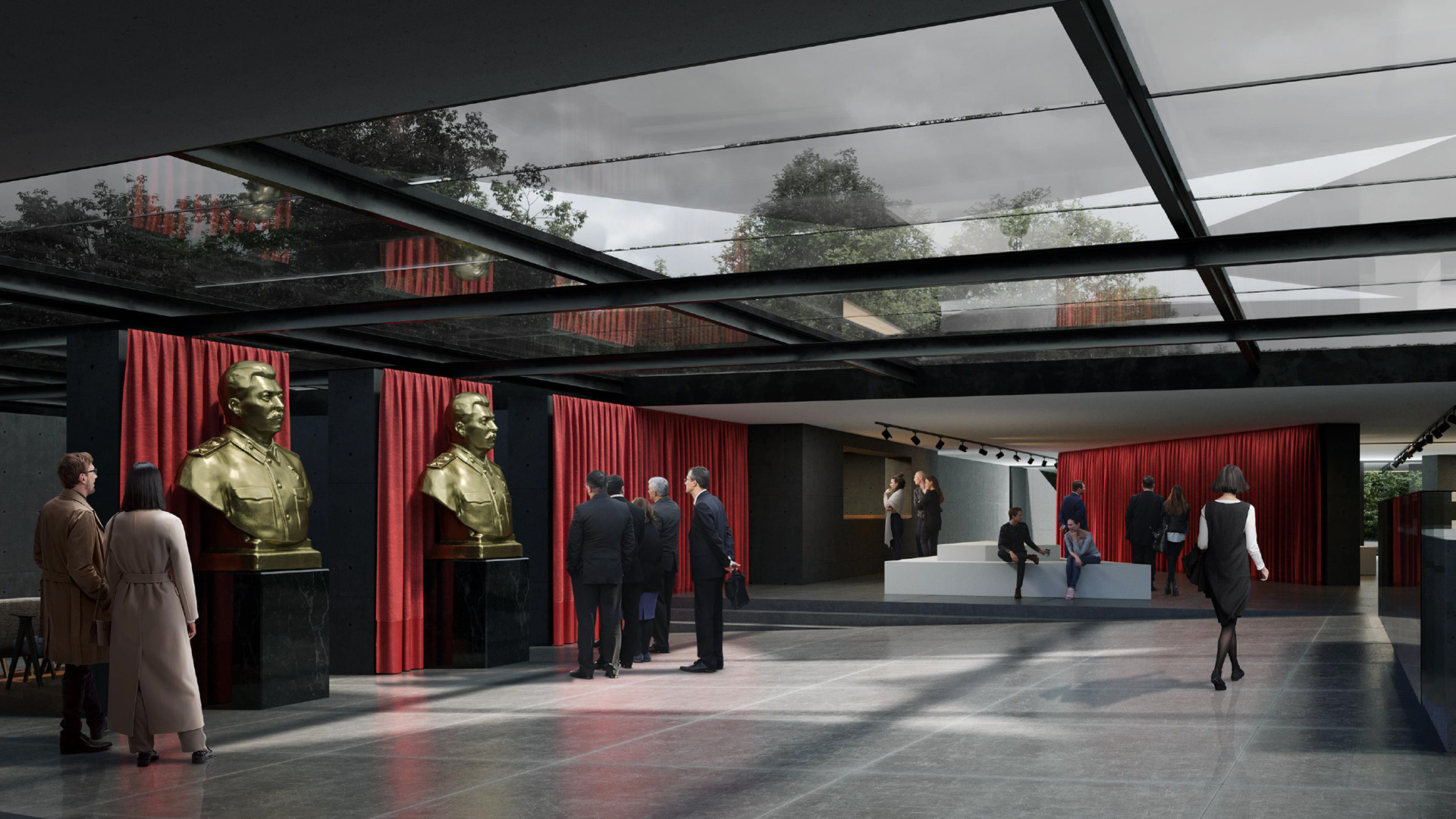
Recsk National Memorial Park – Visual Design: The Greypixel
From the depths of the underground, the visitor’s route resurfaces, leading out to the former Recsk labour camp site. At the centre of the reconstructed barracks, we designed a monument at the location where, according to historical accounts, prisoners were assembled each day. This memorial consists of slender, human-height columns with reflective surfaces, symbolizing the prisoners. When visitors look at them, they see their own reflections, drawing a personal connection to the past. The pathway then sharply turns back, running behind the barracks, evoking the escape routes attempted by prisoners. Returning to the main building, an underground corridor leads to the Radio Free Europe studio, from which a passage connects to the Auditorium and the Hall of Oath. These spaces provide room for reflection, discussion, and interpretation of the exhibition. The final section of the visitor’s journey leads back outside, where the Garden of Composure offers a peaceful retreat. The tour concludes in the museum’s café and bookstore.
The exposed raw concrete surfaces of the design not only enhance the dramatic impact of the building but also represent the stark power of the communist regime. The decision to embed the central building underground carries a historical and symbolic significance: the communist government sought to physically and ideologically obscure the reality of its brutal repressions, attempting to erase the existence of places like Recsk. Our architectural concept embodies this ambivalent relationship between concealment and exposure, between repression and remembrance.
Project Info
Project Name
Recsk National Memorial Park architectural competition
Location
Recsk, Hungary
Year of Design
2021
Organizer
BFK Budapest Fejlesztési Központ
General Design
BORD Architectural Studio
Head Architect
Péter Bordás
Visual Design
The Greypixel
